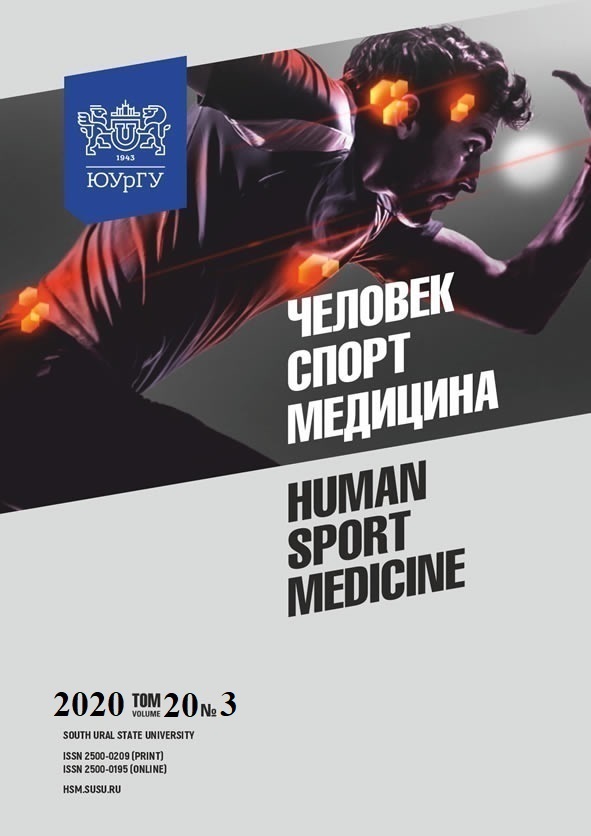MORPHOFUNCTIONAL FEATURES OF ERYTHROCYTES IN YOUNG WOMEN DEPENDING ON THE LEVEL OF MOTOR ACTIVITY AND HEREDITARY FACTOR
Abstract
Aim. The paper deals with the adrenergic reactivity of erythrocytes and its connection with quantitative and qualitative characteristics of cells in young women with different levels of motor activity depending on the rs4646994(I/D) polymorphic variant of the angiotensin-converting enzyme (ACE) gene. Materials and methods. Young female students took part in the study: the 1st group (n = 33) included young women with a relatively inactive lifestyle, the 2nd group
(n = 18) included those regularly involved in sports activity (volleyball and lapta). Red blood cells were counted with the ADVIA 60 hematology analyzer (BAYER, Germany). The adrenergic reactivity of erythrocytes (ARE) was assessed by changes in erythrocyte sedimentation rate (ESR) under the effect of adrenaline in vitro in final concentrations of 10–5; 10–6; 10–7; 10–8 (stress concentration – SCA) and 10–9; 10–11; 10–13 (physiological concentration – PCA) g/ml. The type of the adrenergic reactivity of erythrocytes was established depending on the direction of ESR changes in the presence of adrenaline – aggregative (Ag) with an ESR increase, anti-aggregative (AnAg) with a ESR decrease, and affectless (Af). The average and maximum values of changes were also taken into account. PCR analysis was performed on the rs4646994 polymorphic variant of the ACE gene. Results. A direct correlation was found between the I/D polymorphism of the ACE gene with average values of ARE when exposed to PCA (R = 0.52, P = 0.04), with the maximum ESR change under the effect of SCA (R = 0.52, P = 0.04), as well as with the direction of ESR changes induced by adrenaline (R = 0.55, P = 0.03). Thus, among individuals with the I/D genotype erythrocyte aggregation prevails, while female athletes with the D/D genotype are not characterized by the same type of ARE. Conclusion. Young female athletes, carriers of the D/D genotype of the АСЕ gene, are the most resistant to the effect of both PCA and SCA.
References
References on translit
Copyright (c) 2020 Human. Sport. Medicine

This work is licensed under a Creative Commons Attribution-NonCommercial-NoDerivatives 4.0 International License.















